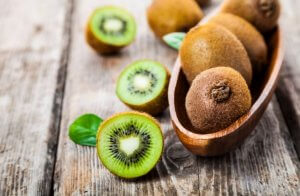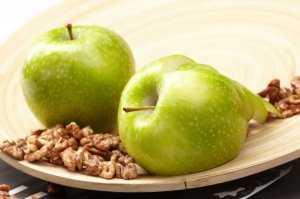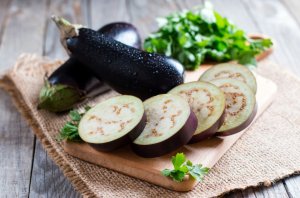Seasonal Foods to be Healthy: Month by Month

A balanced diet plays a very important role in the life of every athlete. Getting the most out of seasonal foods is a way of being healthy on a budget. Do you want to know about the best seasonal fruits and vegetables and when to get them? Well, don’t miss out on the valuable information below!
Why eat seasonal foods?
Seasonal foods bring benefits to our health and also to our wallet. These are some of the advantages of consuming them:
- They’re cheaper. Choosing seasonal foods means a reduction in price. This is because the amount that’s produced, is enough to meet the demand for them. But, out of season, they’re up to five times more expensive than their usual price.
- They’re tastier. Today, with greenhouses and huge crops, we can have almost any food, at any time of the year. But, by choosing seasonal foods means that they were grown naturally. This has advantages, as they have fewer chemicals, are natural and consequently much tastier. In addition, you can find them in different stages of maturation.
- Their nutritional value is an added advantage. As seasonal foods mature in a natural way, they absorb the energy of the sun. Therefore, their nutrients remain intact, resulting in a quality product.
When to get seasonal foods
Fruits and vegetables should always be a part of a balanced diet, which every athlete wants to eat. In fact, we recommended that you eat at least five combined servings a day, or one of them independently. Here’s a list of foods that you can purchase in each season.
January
In January you can purchase various fruits and vegetables such as lemons, persimmons, sharoni, chicory, green beans, mandarin clemenvillas and garlic. Don’t forget about broccoli, onion, parsnips, brussel sprouts, bananas and Granny Smith apples.
In addition, depending on the days of the month, you can find avocados, kiwis, dates, pineapples and papayas, tomatoes, cherimoyas, chestnuts and pomegranates.

February
In February comes rain! With this weather change you can find vegetables such as, pak choy, peas, artichokes, asparagus, calcots, red cabbages, celery, tudela buds and red chard.
Regarding fruits, we can buy avocados, dates, kiwis, lemons, mandarins, mangos, apples, oranges, papayas, pears, pineapples, bananas, grapefruits and tomatoes.
March and April
Laurel, romanesco cabbages, strawberries, limes, spring onions, pink grapefruits, dandelion, radishes, garlic, watercress, medlars, mangos, apples, cauliflower, endives, spinach, ginger, mushrooms, papaya and many more products are all among what you’ll find in the spring months. The good weather favors the production and growth of fresh food.

May and June
With the heat of summer, the fruits that we long for the rest of the year begin to arrive, such as cherries, plums and apricots. Likewise, nectarines, lychees, melons, watermelons, peaches, raspberries, brevas and apricots also begin to appear.
During these months, the most popular vegetables are, zucchini, read bean perona, celery, beet, white asparagus, chives, nettle and lettuce queen of may, among others. Without a doubt, these two months are the best months to purchase a great variety of seasonal foods.
July and August
During these months, the fields are decorated with cantaloupe melons, blueberries, plums, picota cherries, peaches, prickly pears, currants, Christmas melons, watermelons and white plums.

The most outstanding vegetables grown during this period are cucumbers, romaine lettuces, aubergines, red peppers, cherry tomatoes, padrón peppers, and red onions.
September and October
To close the summer, there’s nothing better than figs, grapes, apples, mangoes, blackberries, dates, pomegranates, tangerines and avocados.
You can enjoy salads, with grilled vegetables or ratatouille, because you’ll find vegetables such as fungi, pumpkins, sweet potatoes, kale, cabbages, leeks, chard or mushrooms.
November and December
And when the cold weather arrives, you can enjoy endive, artichokes, borage, fennel, celery, broccoli, beetroot, turnips, thistle, ginger, cauliflower, the oak leaf lettuce and spinach.
Regarding fruits, we’ll find pineapples, oranges, cherimoyas, kumquats (or Japanese oranges) and the strawberry tree. This is a time that’s poor in fruits, but rich in vegetables.
You can see that every month there is a leading product. And by buying these seasonal foods you’ll take care of your health and your wallet. What’s on your meal plan?
“]
A balanced diet plays a very important role in the life of every athlete. Getting the most out of seasonal foods is a way of being healthy on a budget. Do you want to know about the best seasonal fruits and vegetables and when to get them? Well, don’t miss out on the valuable information below!
Why eat seasonal foods?
Seasonal foods bring benefits to our health and also to our wallet. These are some of the advantages of consuming them:
- They’re cheaper. Choosing seasonal foods means a reduction in price. This is because the amount that’s produced, is enough to meet the demand for them. But, out of season, they’re up to five times more expensive than their usual price.
- They’re tastier. Today, with greenhouses and huge crops, we can have almost any food, at any time of the year. But, by choosing seasonal foods means that they were grown naturally. This has advantages, as they have fewer chemicals, are natural and consequently much tastier. In addition, you can find them in different stages of maturation.
- Their nutritional value is an added advantage. As seasonal foods mature in a natural way, they absorb the energy of the sun. Therefore, their nutrients remain intact, resulting in a quality product.
When to get seasonal foods
Fruits and vegetables should always be a part of a balanced diet, which every athlete wants to eat. In fact, we recommended that you eat at least five combined servings a day, or one of them independently. Here’s a list of foods that you can purchase in each season.
January
In January you can purchase various fruits and vegetables such as lemons, persimmons, sharoni, chicory, green beans, mandarin clemenvillas and garlic. Don’t forget about broccoli, onion, parsnips, brussel sprouts, bananas and Granny Smith apples.
In addition, depending on the days of the month, you can find avocados, kiwis, dates, pineapples and papayas, tomatoes, cherimoyas, chestnuts and pomegranates.

February
In February comes rain! With this weather change you can find vegetables such as, pak choy, peas, artichokes, asparagus, calcots, red cabbages, celery, tudela buds and red chard.
Regarding fruits, we can buy avocados, dates, kiwis, lemons, mandarins, mangos, apples, oranges, papayas, pears, pineapples, bananas, grapefruits and tomatoes.
March and April
Laurel, romanesco cabbages, strawberries, limes, spring onions, pink grapefruits, dandelion, radishes, garlic, watercress, medlars, mangos, apples, cauliflower, endives, spinach, ginger, mushrooms, papaya and many more products are all among what you’ll find in the spring months. The good weather favors the production and growth of fresh food.

May and June
With the heat of summer, the fruits that we long for the rest of the year begin to arrive, such as cherries, plums and apricots. Likewise, nectarines, lychees, melons, watermelons, peaches, raspberries, brevas and apricots also begin to appear.
During these months, the most popular vegetables are, zucchini, read bean perona, celery, beet, white asparagus, chives, nettle and lettuce queen of may, among others. Without a doubt, these two months are the best months to purchase a great variety of seasonal foods.
July and August
During these months, the fields are decorated with cantaloupe melons, blueberries, plums, picota cherries, peaches, prickly pears, currants, Christmas melons, watermelons and white plums.

The most outstanding vegetables grown during this period are cucumbers, romaine lettuces, aubergines, red peppers, cherry tomatoes, padrón peppers, and red onions.
September and October
To close the summer, there’s nothing better than figs, grapes, apples, mangoes, blackberries, dates, pomegranates, tangerines and avocados.
You can enjoy salads, with grilled vegetables or ratatouille, because you’ll find vegetables such as fungi, pumpkins, sweet potatoes, kale, cabbages, leeks, chard or mushrooms.
November and December
And when the cold weather arrives, you can enjoy endive, artichokes, borage, fennel, celery, broccoli, beetroot, turnips, thistle, ginger, cauliflower, the oak leaf lettuce and spinach.
Regarding fruits, we’ll find pineapples, oranges, cherimoyas, kumquats (or Japanese oranges) and the strawberry tree. This is a time that’s poor in fruits, but rich in vegetables.
You can see that every month there is a leading product. And by buying these seasonal foods you’ll take care of your health and your wallet. What’s on your meal plan?
“]
All cited sources were thoroughly reviewed by our team to ensure their quality, reliability, currency, and validity. The bibliography of this article was considered reliable and of academic or scientific accuracy.
- Herrera, C. M. (1982). Seasonal variation in the quality of fruits and diffuse coevolution between plants and avian dispersers. Ecology, 63(3), 773–785. https://doi.org/10.2307/1936798
- Organización de Consumidores y Usuarios (OCU). Calendario de frutas y verduras. https://www.ocu.org/alimentacion/alimentos/calculadora/calendario-de-frutas-y-verduras
This text is provided for informational purposes only and does not replace consultation with a professional. If in doubt, consult your specialist.








